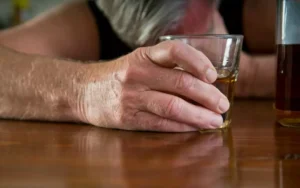
MDMA has different detection windows, depending on the drug tests used and on your body’s ability to break down the chemical compounds within the drug. Just because someone tests positive, it does not necessarily mean that a drug test on another person who took the same amount of the drug at the same time will detect MDMA. Other factors, including a person’s individual metabolism, the dose taken and the presence of other drugs in the system can also affect the speed at which the body metabolizes ecstasy. A person’s urine will usually test positive for molly — also known as ecstasy, MDMA, X and E — within a few hours of taking the drug. Urine samples will continue to test positive two to four days after last use. Hillary, an Orange County local, has been working in the field of addiction for over adecade and has been in recovery herself for over 13 years.
Sweat Tests
In the case of MDMA, there have been several studies conducted in recent years that have shown that the drug can cause long-term damage to the brain. As such, it is important to be aware of this before taking the drug. When someone takes a large dose of molly, however, these enzymes can become overwhelmed.
What factors affect how long MDMA stays in your system?
He traveled the country for 10 of those years working as a banking consultant teaching large banks how to Sober living home acquire new customers. Megan has been a member of the Alina Lodge family for many years, serving as an intern in 2011, and joining the Clinical team full time in January of 2012. Prior to coming to Alina Lodge, Megan was the Senior Case Supervisor for Passaic County Court Appointed Special Advocates. In this time, some rehabs may choose to prescribe prescription medications that will lessen uncomfortable symptoms.
How long does Molly stay in your system for a drug test?
- Molly is usually detectable in bodily fluids for one to three days after ingestion.
- MDMA and its metabolites pass to the kidneys, which will filter the drug out of the bloodstream.
These drugs first became popular at raves and nightclubs, and they have continued to grow in popularity as a common party drug. Both Molly and ecstasy are classified as Schedule I drugs under the Controlled Substances Act, meaning these drugs are highly addictive and there is no accepted medical use for them. Trials are currently underway to determine if MDMA is effective for PTSD, anxiety in terminally ill patients or social anxiety in autistic adults. Heather transitioned into the substance abuse field in 2012 where she began her career in referral relations and the admissions aspect of the industry.

When MDMA is mixed with other drugs, it can increase the risk of negative health effects and potentially dangerous interactions. The most commonly mixed substances with MDMA include alcohol, cocaine, and ketamine. Aside from CYP2D6, several factors can affect a person’s metabolism such as exercise, the amount of body fat, diet and water intake.
Reasons Why You Have Foamy Urine
Although there is some debate on whether Molly is addictive, researchers do know that MDMA targets the same chemicals in the brain as other drugs that are addictive. Additionally, both Molly and ecstasy are often cut with highly addictive prescription and illegal drugs. Without testing, it is impossible for someone to know exactly what they are taking when they use Molly or ecstasy. Once you have taken Molly, there is nothing you can do to speed up the process of getting how long does molly stay in your urine it out of your system because your liver needs time to process the drug. Some of the liver enzymes needed to process Molly are not naturally present in large quantities, so it can take days for Molly to process. Molly shows up in blood within one to two hours after taking the drug.

If the person is suffering with anxiety following their MDMA use, short-term benzodiazepines may be prescribed. Overall, MDMA is a dangerous drug that can cause both short-term and long-term health problems. The drug can cause dehydration, hyperthermia (overheating of the body), and heart problems. MDMA can also interfere with the body’s ability to regulate serotonin levels, which can lead to long-term problems with mood and cognition. Once the liver breaks down MDMA, the drug and its byproducts are excreted in the urine.
- However, Molly has also been found to be commonly mixed with other addictive drugs.
- Once you have taken Molly, there is nothing you can do to speed up the process of getting it out of your system because your liver needs time to process the drug.
- However, many people have been addicted to multiple substances in the past and have been able to break free of their addiction.
- When a person takes molly, it’s rapidly absorbed in the intestines and reaches its peak level in the bloodstream about two hours later.
- Molly/MDMA isn’t part of the standard SAMHSA-5 drug test many people take.

These effects are usually temporary, but in some cases they can be long-lasting. This article lays out the specifics of how long the drug stays in your system. You may be tempted to drink lots of water, or exercise, to try and flush the drug out of your system. However, there is no evidence to suggest these will lead to MDMA leaving your system faster. It is not possible to speed up the metabolization process of molly, and some methods that claim to do so can be dangerous. The chemicals then move to the bladder, and they eventually leave the body in the urine.
 Skip to main content
Skip to main content




 Phone
Phone 
 Address
Address  226 503 4006
226 503 4006